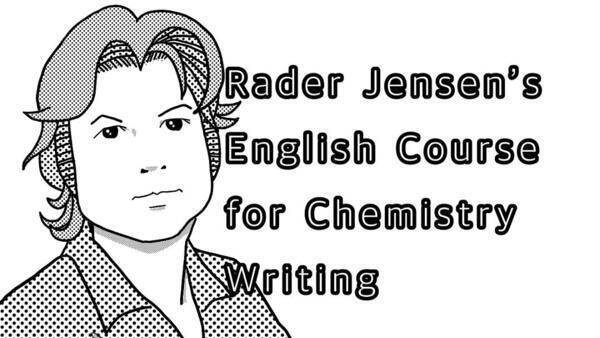[化学論文のための英語講座] 第84回:「Can」と「Be able to」 Can and Be able to
2025年10月27日

(English version is here.)
ずいぶん前になりますが、第22回で「can」について説明しました。「can」は単独では活用せず※、動詞や他の言葉と組み合わせて使う助動詞で「できる」という意味を持ちます。助動詞「can」は人称による変化をしません。否定形もあります。
※例外ですが、会話で返答として単独で利用できます。すなわち「Yes, it can.」や「No, it cannot.」は会話でよく使われています。
例文を見てみましょう。
1. DIBALH can reduce esters to aldehydes.
和訳:DIBALHはエステルをアルデヒドに還元できる。
2. DIBALH can react violently with water.
和訳:DIBALHは水と激しく反応できる。
3. Ethanol cannot be deprotonated by triethylamine.
和訳:エタノールはトリエチルアミンによって脱プロトン化されない。
「can」の過去形は「could」ですが、「could」は仮定の意味を伝える場合が多いです。
例文を見てみましょう。
4. The ketone could be epimerised by potassium carbonate.
これは二つの意味に解釈する事が可能です。
和訳:ケトンは炭酸カリウムによってエピマー化することができた。(過去)
和訳:ケトンは炭酸カリウムによってエピマー化される可能性があろう。(仮定)
「can」の代わりに「able to」を使用できる場合が多いです。「able to」は形容詞の役割を果たし、いつも存在動詞(be)と一緒に使います。「able to」も「できる」という意味がありますが、主語(人や生物)が意図を持つことを示唆します。
例文を見てみましょう。
5. We can complete the synthesis in five steps.
6. We are able to complete the synthesis in five steps.
和訳:我々はその合成を5段階で完了できる。
意味は一致します。どちらを使用しても問題ありません。
7. We could complete the synthesis in five steps.
8. We were able to complete the synthesis in five steps.
和訳:我々はその合成を5段階で完了できた。
意味は一致しますが、7はもう一つ「我々はその合成を5段階で完了できそう」という仮定の意味があります。
9. The metal can back donate electrons to the vacant orbital on the carbonyl.
10. The metal is able to back donate electrons to the vacant orbital on the carbonyl.
和訳:金属はカルボニル基の空軌道に電子を逆供与できる。
意味は一致しますが、金属(物質)は意図を持たないので、厳密に言うと9がより適切だと考えられます。
最後に「can」はよく会話で使い、「able to」は文章で使います。
以上の「can/able to」の関係は規則ではなく、傾向であると考えられます。
次回もどうぞお楽しみに。
It was quite a while ago, but in lesson 22 we discussed can. Not used alone*, it is used in combination with another verb to give the meaning be able to. Auxiliary verb can does not conjugate with person (I, you, they, etc.). There is also a negative form.
*In conversation, as an answer it can be used alone. That is to say, "Yes, it can." or "No, it cannot." are often used.
Let us look at some example sentences.
1. DIBALH can reduce esters to aldehydes.
2. DIBALH can react violently with water.
3. Ethanol cannot be deprotonated by triethylamine.
The simple past of can is could, but could often conveys a hypothetical meaning.
Let us look at a few examples.
4. The ketone could be epimerised by potassium carbonate.
This can be understood in two ways:
a. At some point in the past, epimerisation of the ketone with potassium carbonate was possible.
b. There is a reasonable probability that epimerisation of the ketone with potassium carbonate is possible now or will be in the future.
In many cases, able to can be used instead of can. Able to fulfills the role of an adjective, and is always used with a be verb. Able to also expresses ability, but it implies an animate (human or other being) will.
Let us look at a few examples.
5. We can complete the synthesis in five steps.
6. We are able to complete the synthesis in five steps.
These have the same meaning and either can be used without problem.
7. We could complete the synthesis in five steps.
8. We were able to complete the synthesis in five steps.
Both sentences convey a past ability to complete the synthesis, but 7 also convey a hypothetical ability to complete the synthesis now or in the future.
9. The metal can back donate electrons to the vacant orbital on the carbonyl.
10. The metal is able to back donate electrons to the vacant orbital on the carbonyl.
Both convey the same meaning, but metal arguably has no intention and thus, strictly speaking, 9 could be seen as more appropriate.
Finally, can is often used in speaking, while able to is often used in writing.
The above can/able to relationship can be thought of as a tendency rather than a rule.
We look forward to seeing you next time.